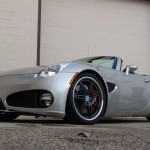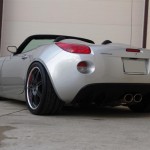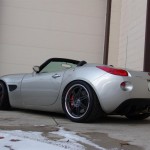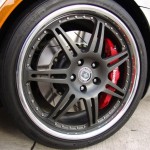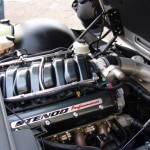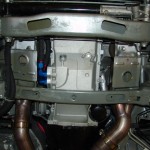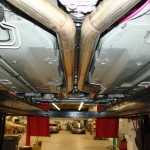
Sometimes you look back in life and realize that you let some awesome cars slip right through your hands. This is a story about one of those cars, and I think about it all too often. It began about 15 years ago when my parents bought a “drivable” 1933 Plymouth PC 4 Door Sedan. Unknown to my parents at the time of purchase, this was an extremely rare car.
Back in 1933, cars didn’t have fancy model names like “Zephyr” or “El Camino”, they just had model numbers. Boring, I know. Even with its brand new fancy-pants one-year-only straight 6 engine, it didn’t have a chance of survival. The great depression was hurting the country worse than ever, and Plymouth had decided to remake the 1932 bodies (for all intents and purposes) and call it a 1933 PC model. Much to Plymouth’s surprise, the few customers that they still had were less than impressed with this grand idea. The Plymouth PC was built for a mere 3 months before they ended production early and switched to the longer wheelbase PCXX and PD models. That’s right, the customers hated the PC and wanted something different, so Plymouth gave them a longer vehicle. At least it wasn’t a 1932 model anymore, right? Several years later, WWII began, and cars were being crushed and melted left and right to make war vehicles. Naturally, the cheapest, crappiest cars out there were the first ones on the chopping block. (Almost sounds like the Cash For Clunkers program!) For reasons unknown, my parents Plymouth had survived all these years against all of these unimaginable odds.
Ok, enough of the history lesson, let’s get back to when the vehicle arrived in the driveway, shall we? My dad is the best technician I have ever met by leaps and bounds, and he was doing a little nitpicking of the new 4 wheeled acquisition. A grind here, and hammer there, and pretty soon a frame-off restoration was in full swing. In his defense, the “drivable” car was built of 80% body filler, 13% rivets, and 7% original sheet metal. The lack of solid body was bad enough that it had to be redone by somebody with more time, the right tools, and more work space. So off it went to a body guy. Weeks passed and a fair amount of money exchanged hands. Frequent phone calls from the body guy assured my parents that everything was going great. New metal was going on, and it was going to be straight as an arrow when they got it back. Yippy!
A month had passed since we last saw the car, and out of the blue my dad received a phone call from the a storage unit owner looking for rent money. “What the?” Well, the body guy had put the Plymouth body and misc parts into a rented storage unit, and took off with the cash. Nice guy right? He had never even touched the car, which was truly crushing.
Weeks turned into months, and months turned to years. The sour taste for this once loved vehicle never left their mouths, which understandably left this ultra rare pile of auto parts sitting dormant in the yard for many years.
At about 18 years old, I just couldn’t take it anymore. I decided I would take charge of the project and teach myself how to do nice bodywork because I couldn’t stand to see it rot. Hundreds upon hundreds of hours went into that car. Cutting rot, welding 300+ rivet holes in the roof, fitting the suicide doors, assembling, building a new firewall, removing the doors again, reassembling….. and on and on it went. Within a summer, it was finally running again. It was far from drivable, but it did run.

Then, the big move happened. The house was sold and all the rolling stock had to move from the old house to the new. “Temporarily” the car went to my brothers house. Temporary then turned into permanently, and before long, the car was parted out and sold piece by piece. Yes, it was all gone as quick as that, and I am still sickened from it. Unfortunately, I lacked time to finish it, and space to work on it. I already had too many cars and had to make choices. Looking back I would have done things a lot differently, it’s too bad I can’t get it back because I would have loved to finish it. Hopefully this Plymouth’s parts have helped bring others back to life again. That is what I tell myself at least.
If you happen to know the whereabouts of any of the major parts from this car, I would love to hear from you and see your own Plymouth project!
What kinds of cars you have you let slip away? Leave me comments!


